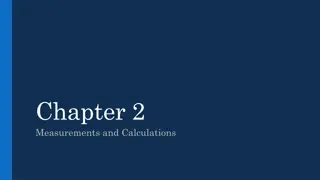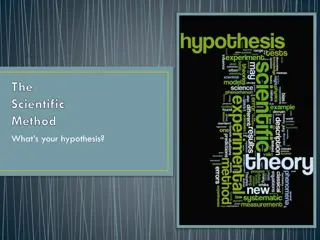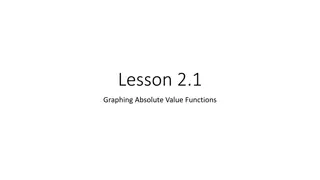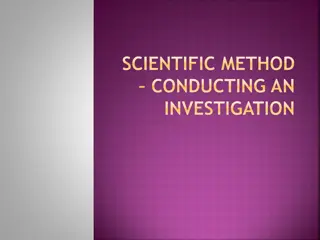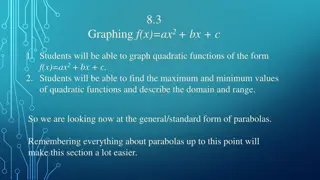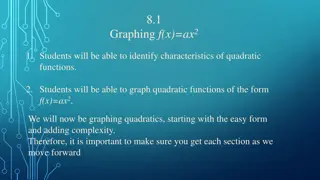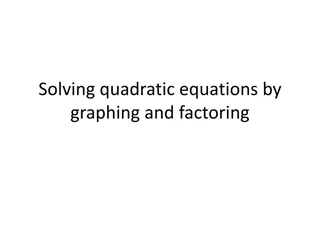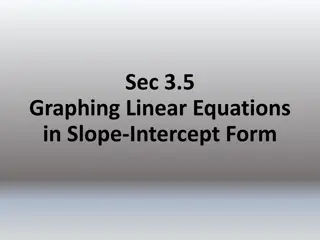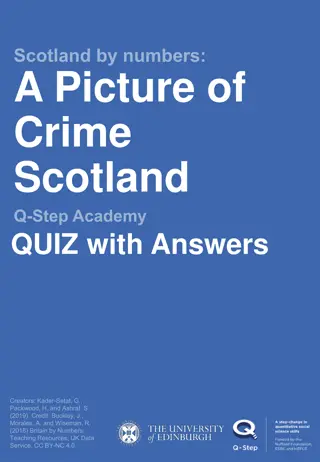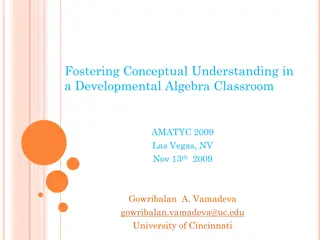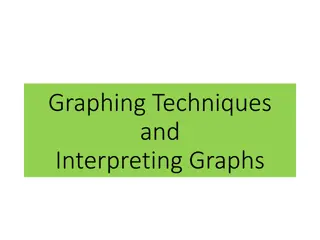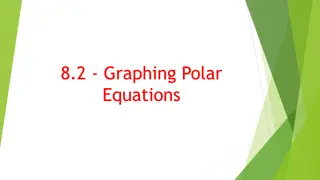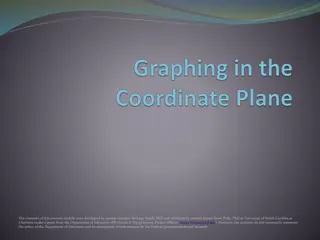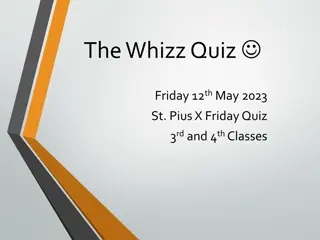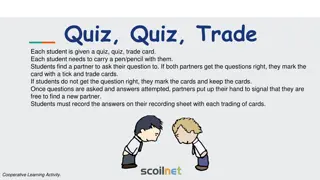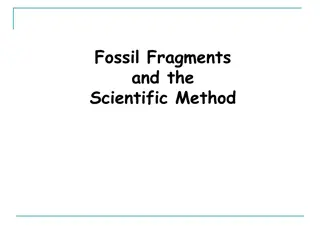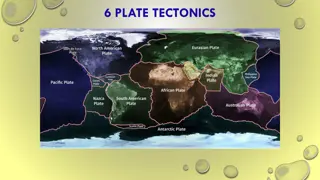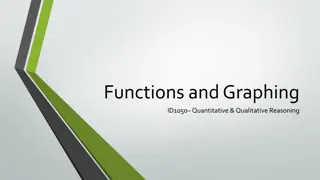Quiz Review on Scientific Method and Graphing
Explore a quiz review covering topics related to scientific method, graphing, and experimental design. Understand key concepts such as hypothesis, scientific law, theory, variables, and experimental control through detailed questions and images. Test your knowledge on laboratory safety, inferences, and experimental variables. Enhance your understanding of the scientific process with this informative quiz review.
Download Presentation

Please find below an Image/Link to download the presentation.
The content on the website is provided AS IS for your information and personal use only. It may not be sold, licensed, or shared on other websites without obtaining consent from the author. Download presentation by click this link. If you encounter any issues during the download, it is possible that the publisher has removed the file from their server.
E N D
Presentation Transcript
SCIENTIFIC METHOD & GRAPHING QUIZ REVIEW Lutzkanin 2015
WHAT IS THE FIRST THING YOU SHOULD DO IF AN ACCIDENT OCCURS IN SCIENCE LAB? Notify your teacher
The statement, If hot and cold water are placed in the freezer, then the hot water will freeze before the cold water is an example of a(n) __. Hypothesis A. Scientific Law B. Experiment C. Variable D.
A medicine is advertised in a television commercial by someone wearing a white lab coat in a hospital setting. Which would be the best inference based on this observation? The medicine is still in the testing stage. A. People should go to the hospital to buy the medicine. B. That the person in the advertisement takes that medicine. C. Medical experts recommend the medicine D.
A well-tested statement that explains a wide range of observations or experimental results Scientific Law A. Hypothesis B. Theory C. Variable D.
A statement that describes what scientists expect to happen every time under a particular set of conditions without attempting to explain why is a(n) Scientific Law A. Hypothesis B. Theory C. Variable D.
During an experiment if you purposely change the temperature to test a hypothesis, the temperature is called the ____. Independent Variable A. Dependent Variable B. Operational Variable C. Control D.
I have heard that eating a Snickers bar in the morning of a big test will help you do better on the test. To find out if this is true, I gave half of my students Snickers bars this morning. The other half of the students did not get Snickers bars. I will analyze the test scores to see if my hypothesis was supported. In this experiment the Snickers bar is the ? And the test grade is the ? Variable; control A. Independent variable; dependent variable B. Dependent variable; independent variable C. Variable; constant D.
Making a forecast of what will happen in the future based on past experiences or evidence is called Observing A. Inferring B. Predicting C. Classifying D.
Which of the following should NOT be included in the scientific process? Bias A. Variable B. Inquiry C. Predictions D.
In 1928, Sir Alexander Fleming was studying bacteria grown in culture dishes. He noticed a mold called penicillin was also growing in some of the dishes. A clear zone existed around the penicillin mold. All the bacteria that had grown in this clear zone had died. In the culture dishes without mold, no clear areas were present. Fleming decided that the mold must be producing a chemical that killed the bacteria. He decided to isolate this substance and then test it to see if it would kill bacteria. Fleming prepared two beakers of nutrient broth, with had everything that the mold needs to grow and reproduce. He put mold into one of the beakers of nutrient broth. He allowed the mold to grow, and then removed the mold from the nutrient broth, and then he added the broth to a dish of bacteria. Fleming added the nutrient broth that had not had mold growing in it to another dish of bacteria. The bacteria in the dish with nutrient broth that had mold in it were all killed. The bacteria in the dish with nutrient broth that did not have mold in it were not killed. Fleming concluded that the mold produced a bacteria killing substance in the broth. He called the substance penicillin 1. Identify the problem Fleming wanted to solve. 2. What was Fleming s hypothesis? 3. What was the variable of the experiment? 4. What was the control? 5. What was Fleming s conclusion? 6. What was the great discovery from Fleming s experiment?
1. Identify the problem Fleming wanted to solve. Was the mold killing the bacteria 2. What was Fleming s hypothesis? The penicillin mold killed the bacteria 3. What was the variable of the experiment? mold 4. What was the control? Dish of bacteria with nutrient broth 5. What was Fleming s conclusion? The mold produced a bacteria-killing substance 6. What was the great discovery from Fleming s experiment? penicillin
Average height (cm) According to the graph, Time (weeks) would be the A. Independent variable B. Dependent variable C. Control D. Constant Time (weeks)
YOU ARE MAKING CHOCOLATE CHIP COOKIES TO BRING INTO YOUR SCIENCE CLASS. THE RECIPE CALLS FOR CUP OF BROWN SUGAR, BUT YOUR GRANDMOTHER TELLS YOU THAT SHE USES CUP AND YOUR MOM TELLS YOU THAT SHE USED CUP OF BROWN SUGAR. YOU WONDER WHAT AMOUNT OF BROWN SUGAR MAKES THE MOST DELICIOUS CHOCOLATE CHIP COOKIES? DESIGN A VALID EXPERIMENT TO TEST THIS SCIENTIFIC PROBLEM. BE SURE TO LABEL EACH PART OF THE EXPERIMENT. Independent Variable amount of brown sugar Dependent Variable taste of the cookies Constants: other ingredients, cooking temperature, cooking time Control: cup brown sugar Gather ingredients Make 3 batches each w/ different amounts of brown sugar Have 6 people try 1 of each cookie Record which cookie they thought was best Repeat experiment 2 more times Draw conclusions 1. 2. 3. 4. 5. 6.


